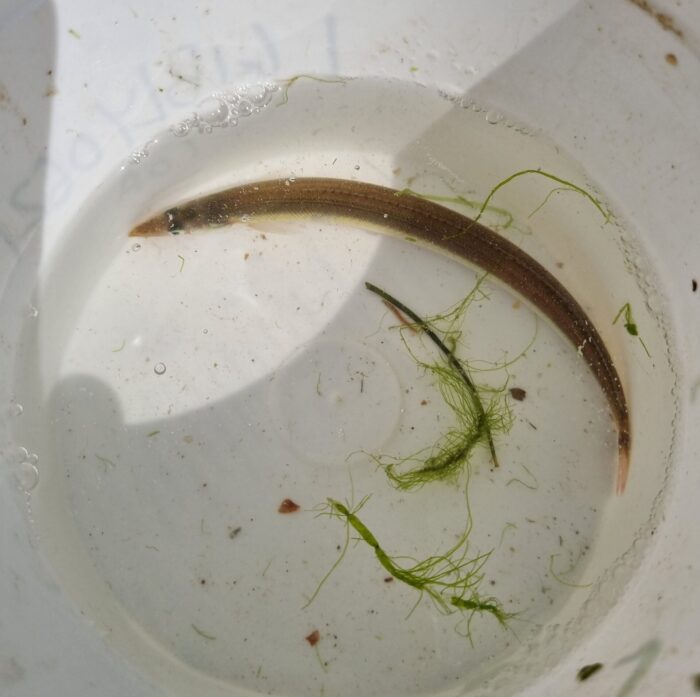Earlier this year in April 2024, the fishing of sandeels was banned for all vessels in the English waters of the North Sea and all Scottish waters. This follows previous bans on UK vessels alone after reports linked the decline in UK seabird breeding populations to the decrease in sandeels. The RSPB has campaigned for the ban on industrial sandeel fishing for years and have celebrated it coming into place.
“Sandeel” is a broader term, which describes several small fish species within the sand lance family. They are small eel like fish which grow up to 30cm in length and can often be found in large shoals. Of the different species, the lesser sand eel Ammodytes marinus is the most abundant in the North Sea and contributes over 90% of sand eel fishery catches (Marine Scotland Assessment).
These organisms are highly reliant on sand as a habitat, hence the name. Sandeels bury themselves in sand for most of the year, only emerging in the winter to spawn and for an extended period in spring and summer during the daytime to feed. During spawning, sandeels produce a batch of sticky eggs which attach to the seabed and take several weeks to hatch. Once hatched, sandeel larvae are suspended in the water column for the first three months of their life before they can settle onto the seabed.
Sandeels play an important role within the ecosystem’s food web, they feed on plankton (mainly copepods) and are the prey of many seabird species. The UK is home to several globally important seabird colonies, including puffins and kittiwakes. Seabirds favour sandeels as prey due to their high oil content which makes them a good source of energy and a nutritious food source on which they can raise healthy chicks.
A decline in the availability of sandeels has contributed to the vulnerability of UK seabird populations by reducing the available food source of many species. Therefore, the ban on sandeel fishing is an important of example of how vital the work of policy makers and environmental groups is in protecting UK wildlife. Both puffins and kittiwakes are currently listed as ‘vulnerable’ species on the IUCN Red List due to the population declines they have suffered in recent years. It is hoped that following the ban on sandeel fishing these seabird species will begin to recover.
In recent years there have been several outbreaks of avian flu which have also negatively impacted seabird populations around the UK. Smaller seabirds are also vulnerable to the increase of greater black-backed gulls and herring gulls in the UK. As these birds are much larger, they may predate on species of smaller seabirds and their chicks and out compete them for space in the coastal environment.
So far, the UK government have established three Marine Protected Areas targeted at protecting seabirds around the UK. However further action is still required for these vulnerable seabird species to recover successfully.

